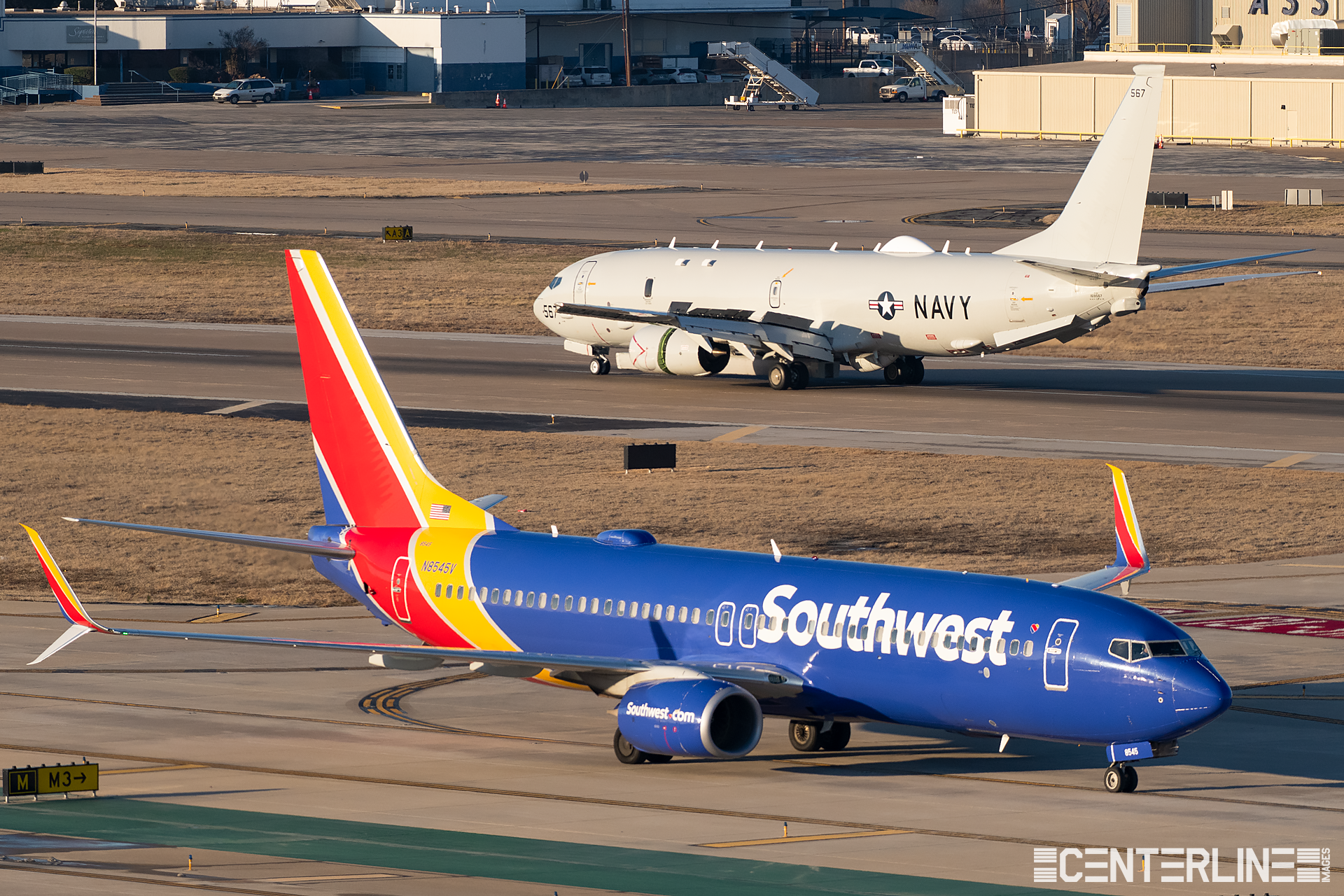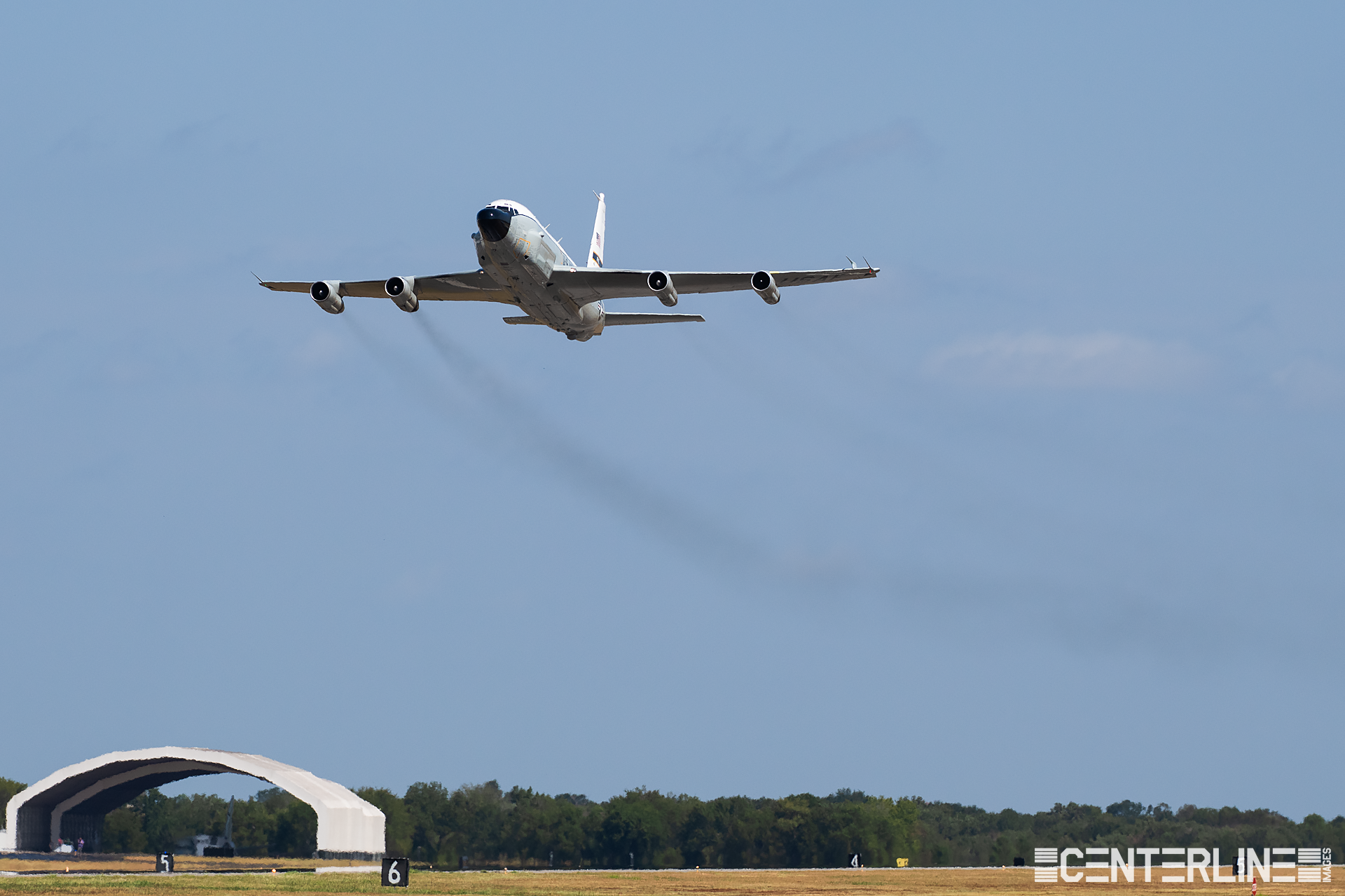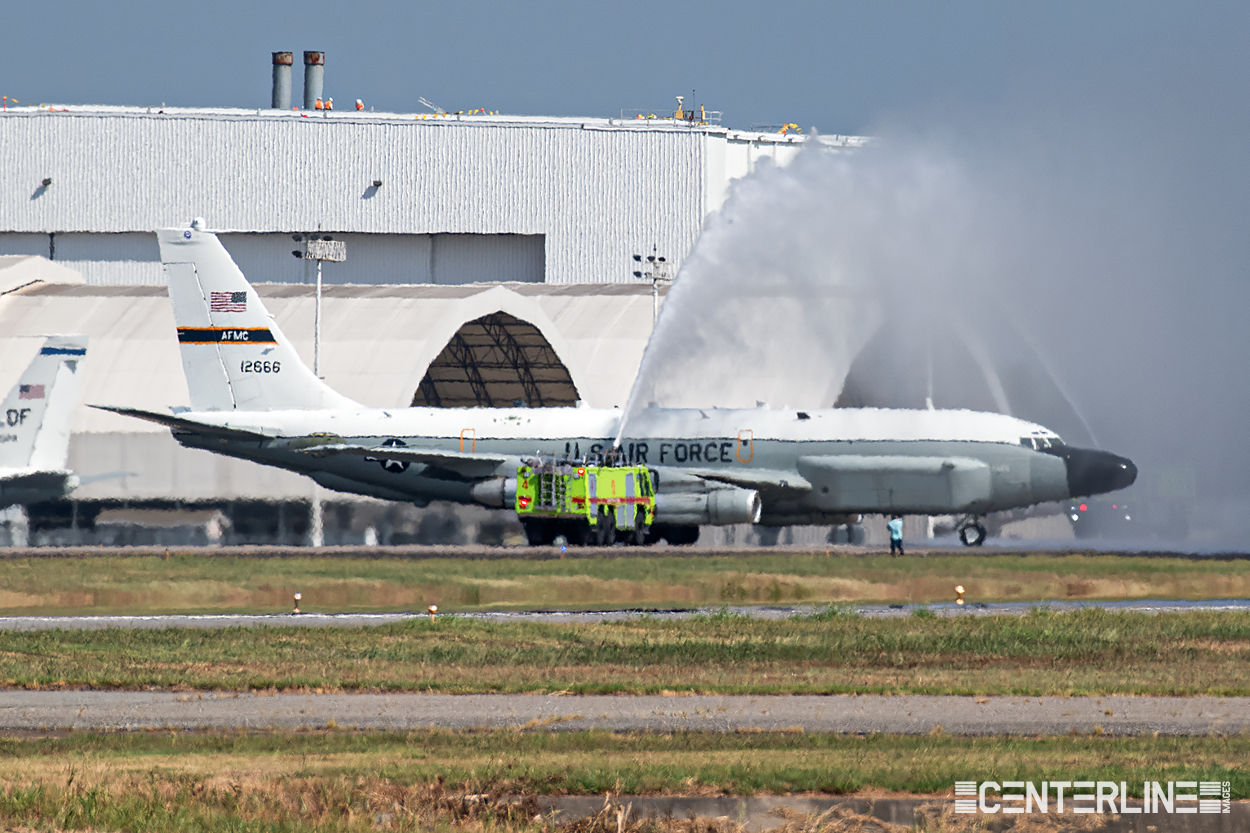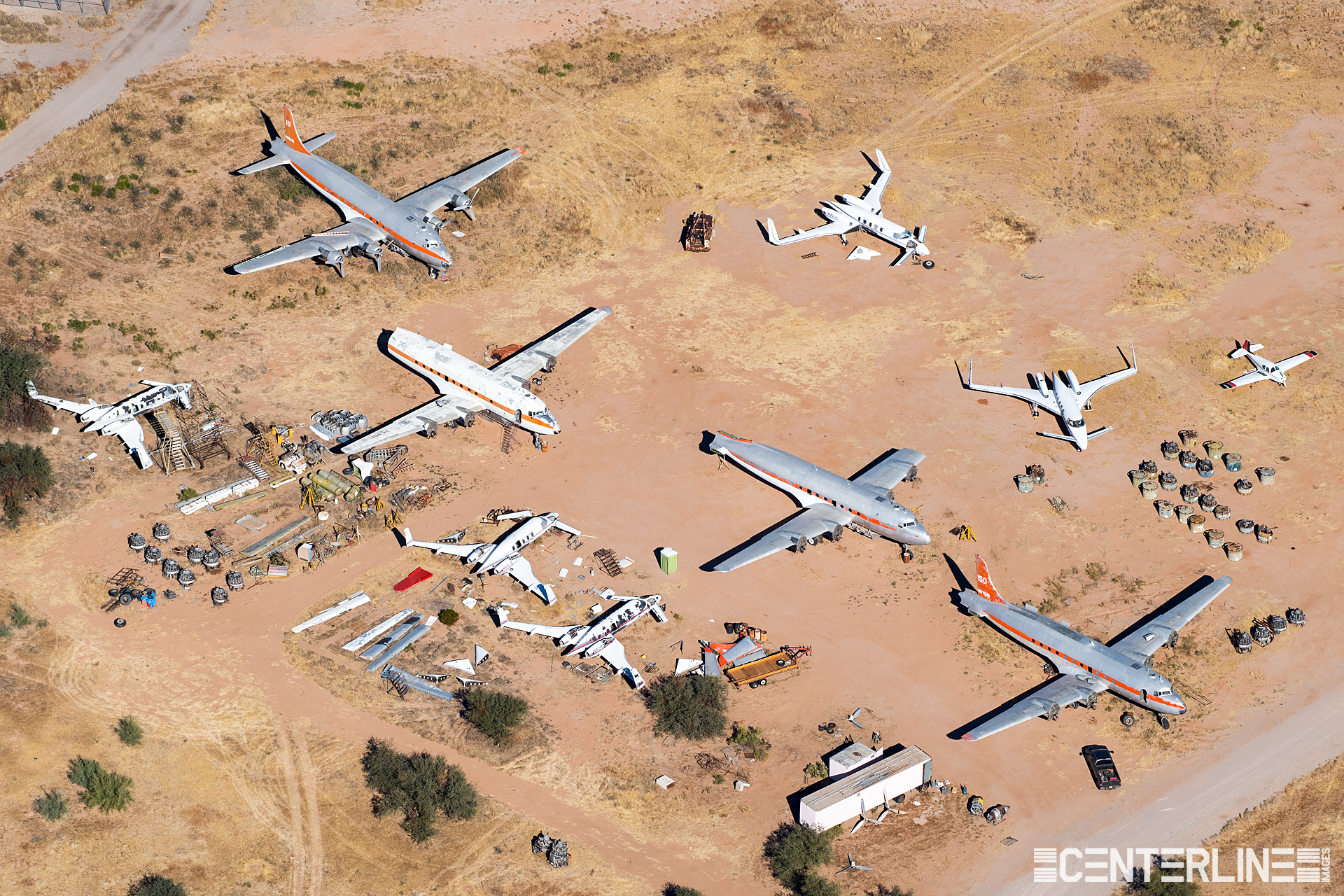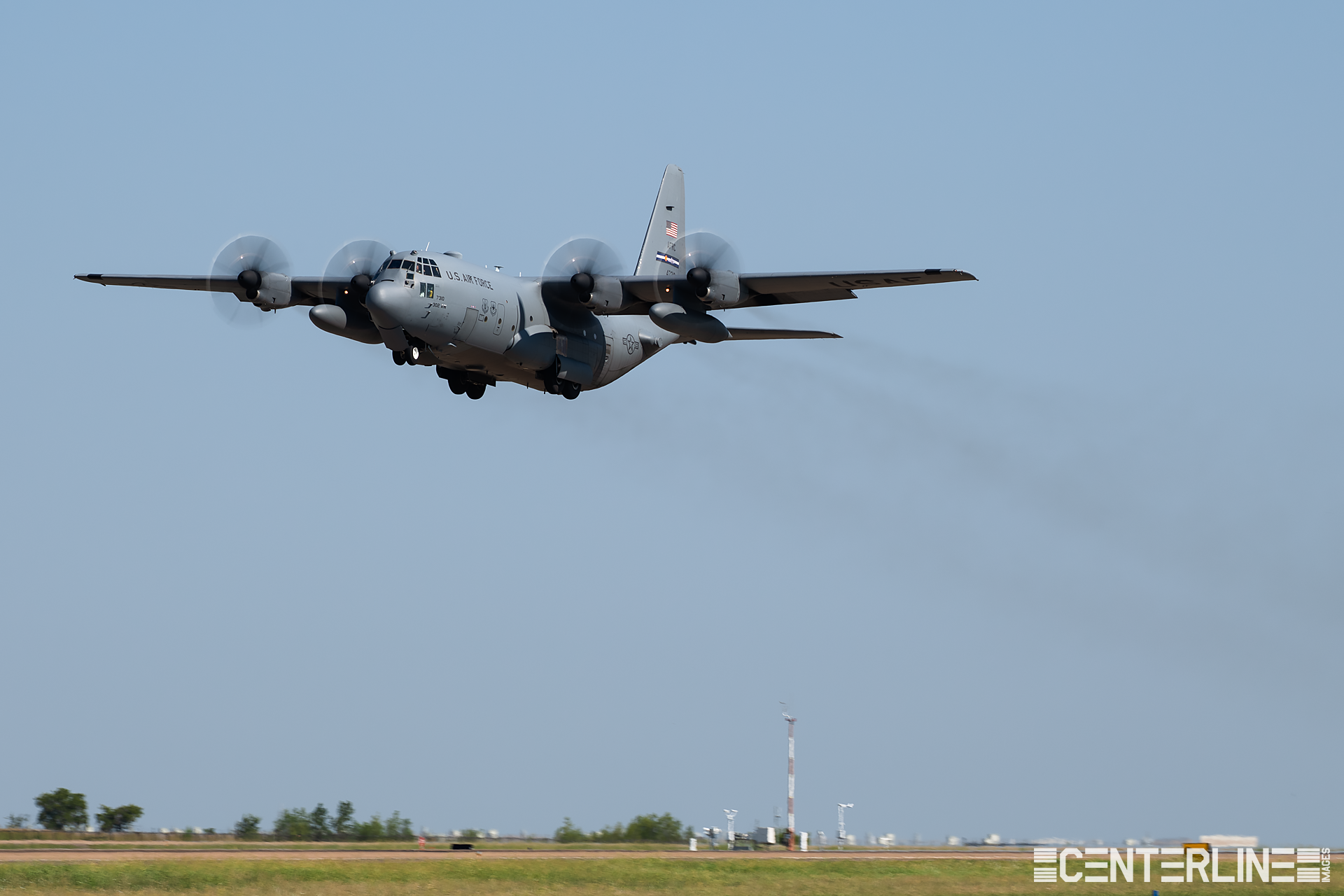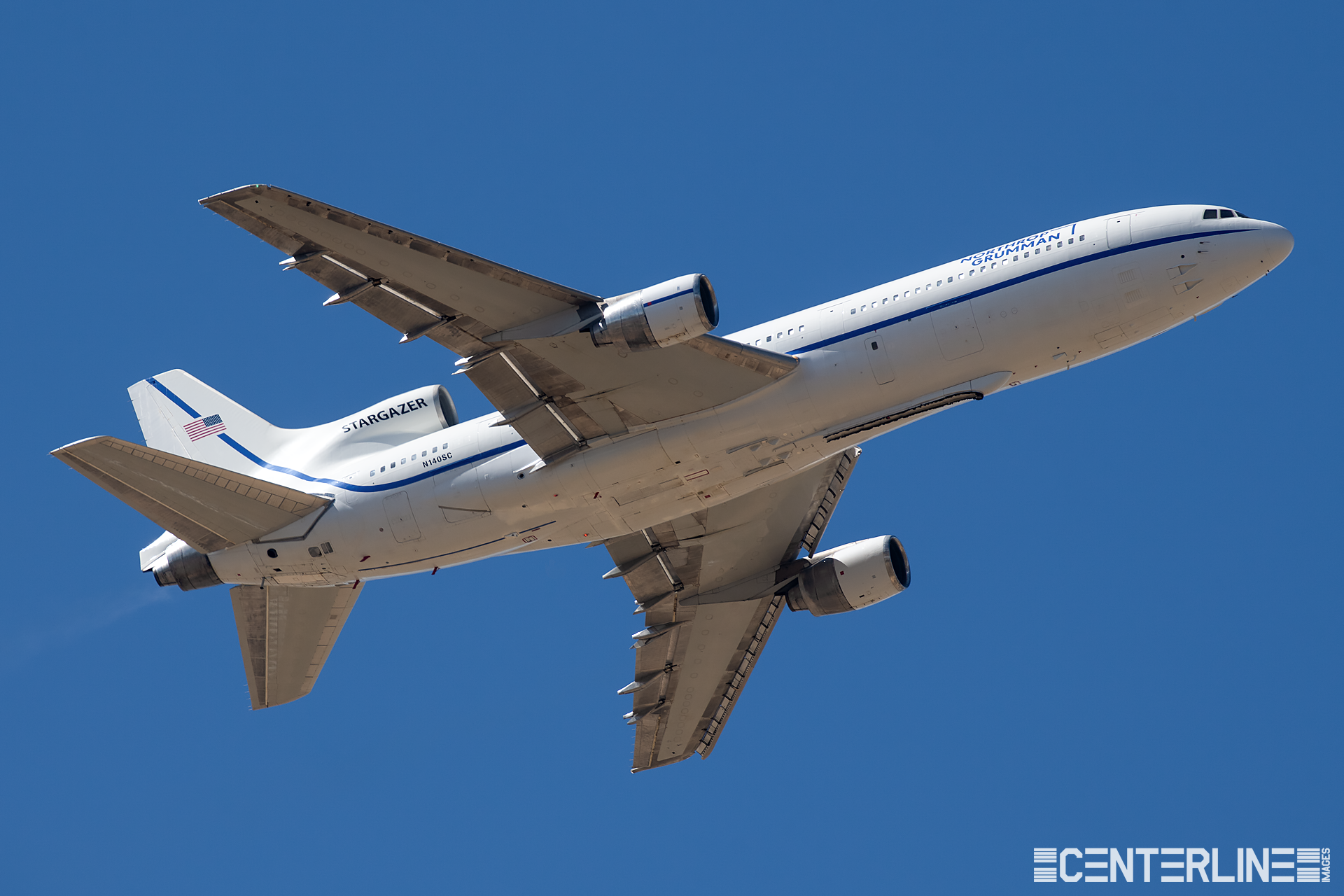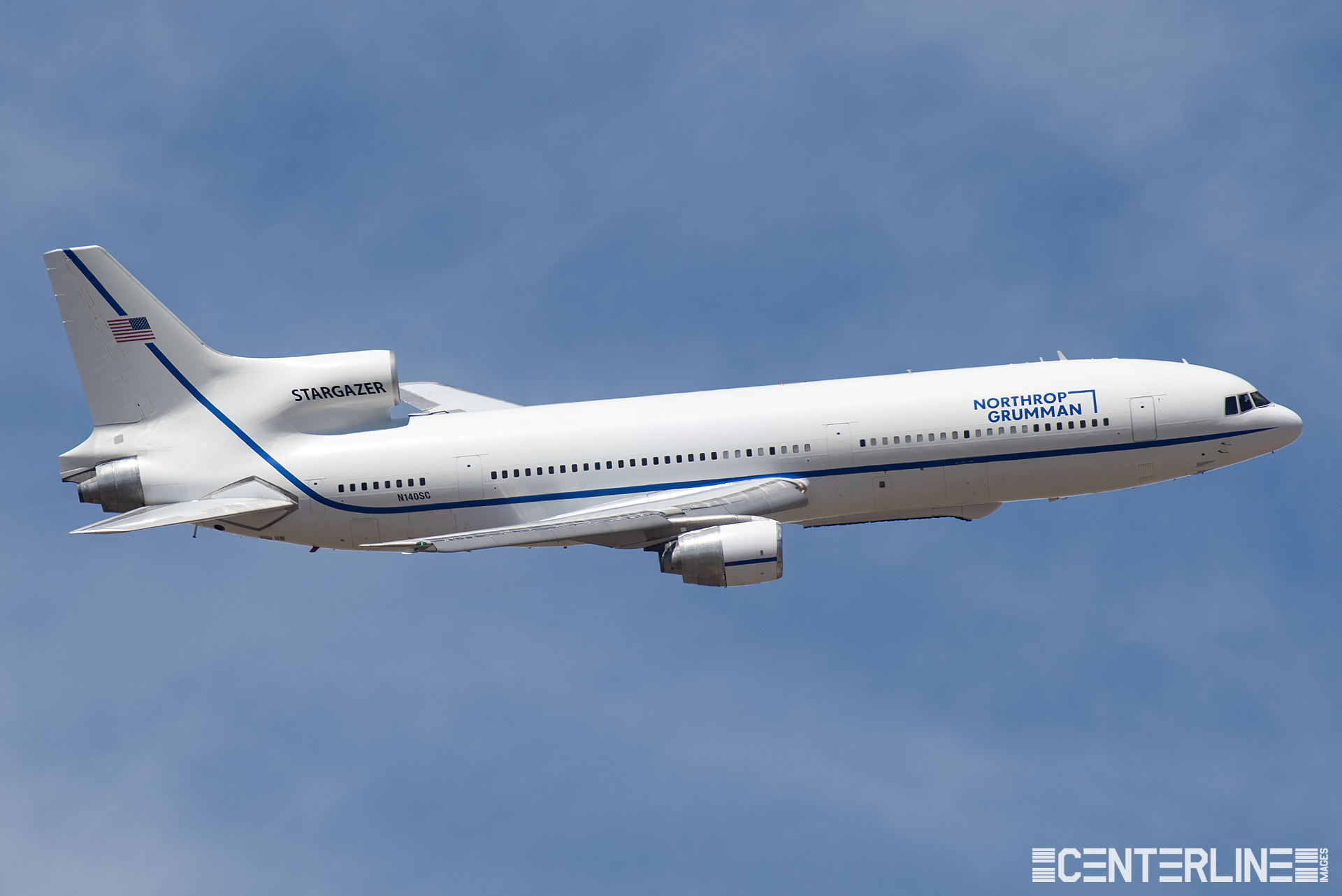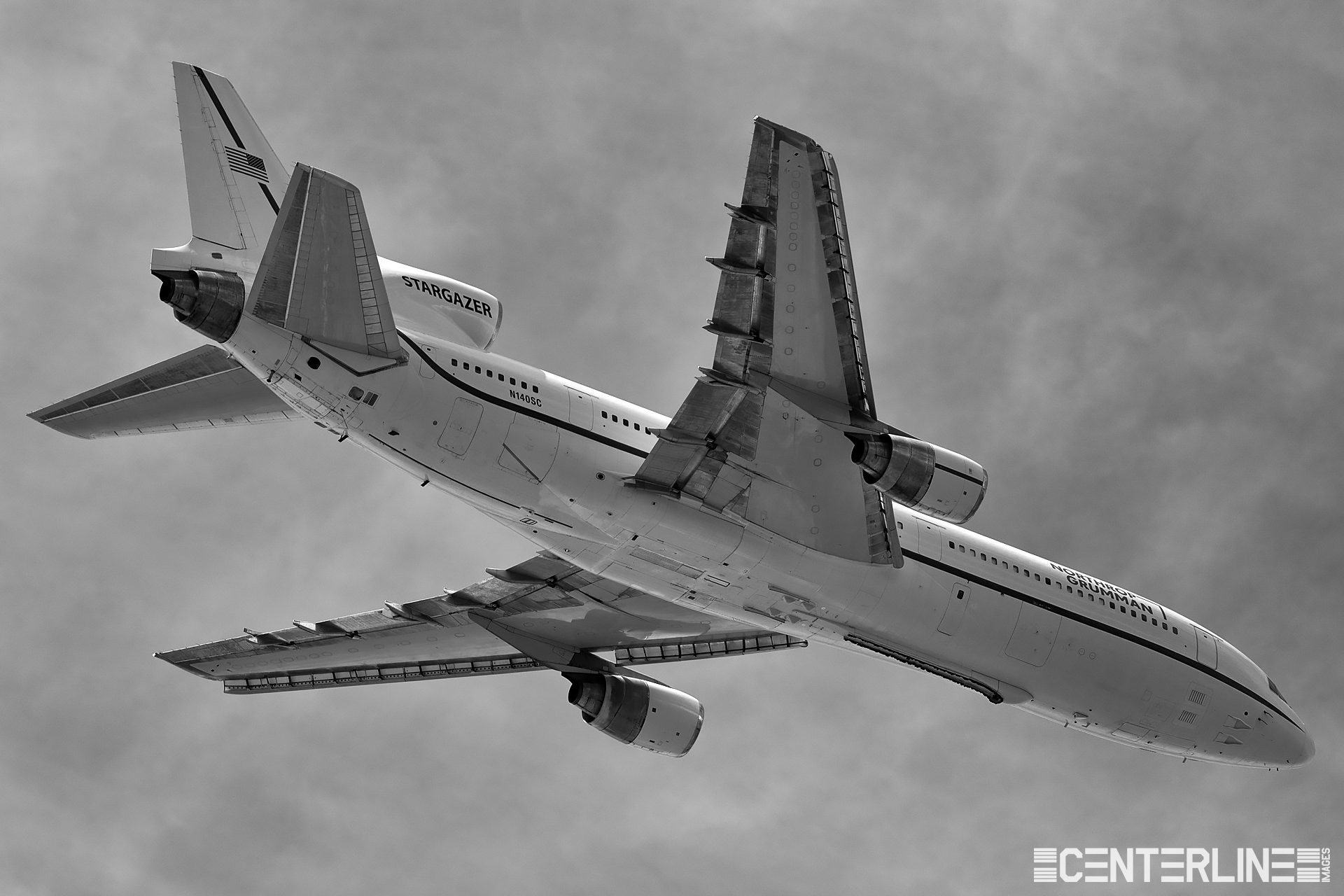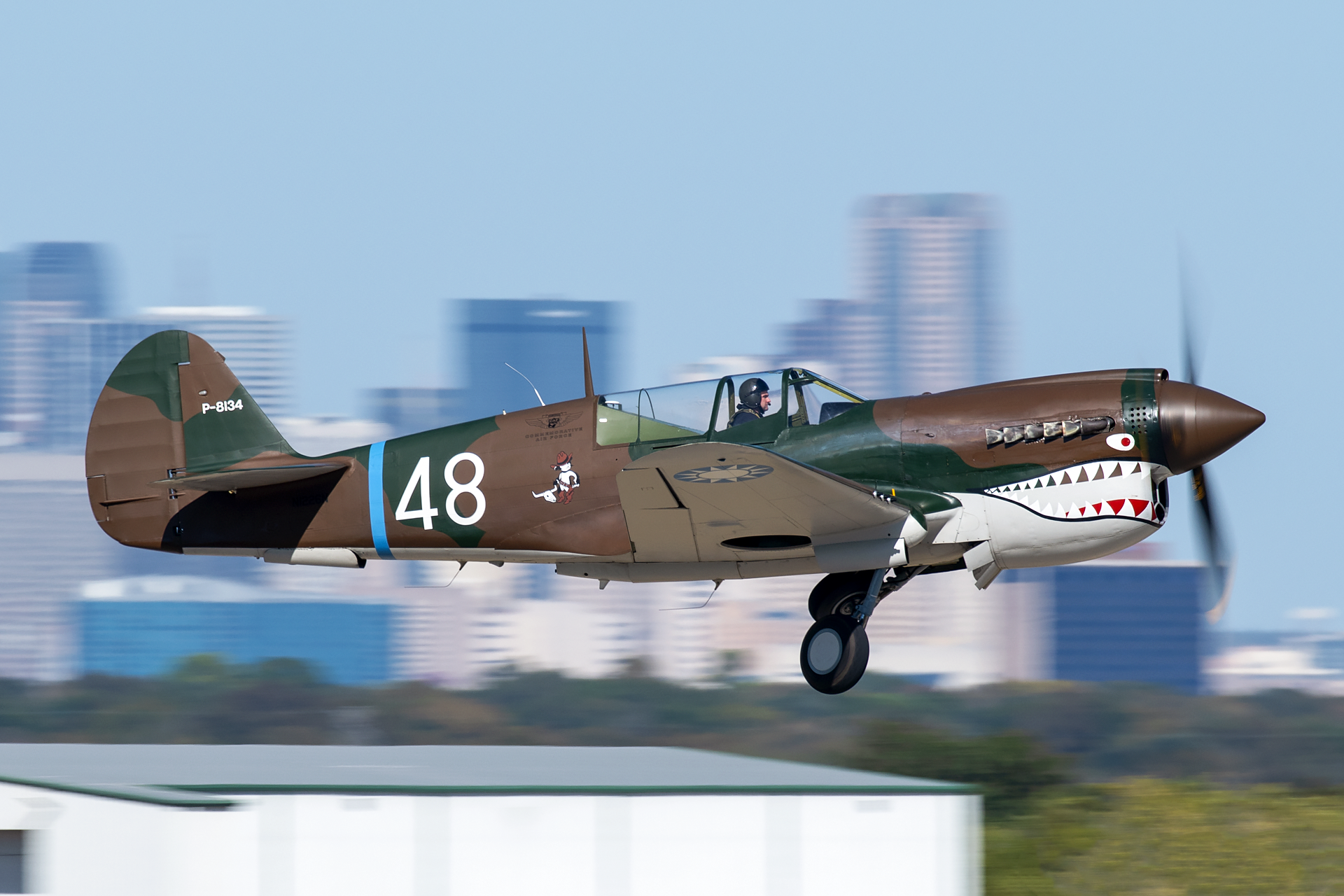
Curious on the backstory behind the photos? This is the place. You'll find not only write ups on local outings, but also reviews of major events I’ve attended.
A New Look For The Dallas Poseidon
An interesting group of mumps and bumps on this P-8A Poseidon seen landing at Dallas Love Field, including a new dorsal fairing near the tail! The aircraft is part of the classified BUPERS SDC Dallas test & evaluation unit.
"SHINR02" touching down on runway 31R at Dallas Love Field back in February after a training sortie over the Gulf of Mexico. This Poseidon is part of the secretive Dallas Love Field-based US Navy detachment BUPERS SDC Dallas/NAWC-23 and appears to have received a new dorsal fairing modification near the tail! The following information is all publicly accessible online.
The tight-lipped Dallas, Texas-based unit plays an important role in test and evaluation of advanced sensor technology such as Raytheon's AN/APS-154 Advanced Airborne Sensor (AAS), which can be seen in these photos slung underneath the aircraft. According to the US Navy, the huge pod was first flown on the P-8A Poseidon in 2015.
The AAS is a state-of-the-art radar used on the P-8 Poseidon maritime patrol aircraft. Developed by Raytheon, the AAS is an upgrade to the AN/APS-149 Littoral Surveillance Radar System (LSRS), which was designed to provide multi-function target detection and tracking as well as high-resolution ground mapping at standoff ranges covering land, littoral, and water areas.
The AAS boasts a double-sided AESA radar, offering near 360-degree coverage and the ability to simultaneously scan, map, track, and classify targets. Moreover, the radar contains a moving target indicator (MTI) that can detect, classify, and track targets on land and at sea at the same time. Synthetic aperture and inverse synthetic aperture radars generate clear, high-quality imagery of inland and ocean areas, allowing P-8 crews to profile vessels from long distances and in adverse weather conditions. The AAS can even detect the faint wakes left by submerged submarines on the surface of the ocean.
The AAS is a game changer for the U.S. military. Once a hostile vessel is identified, targeting information can be sent to another armed platform and a networked weapon can be guided to the target through a data link. As for the rest of bumps and and antennas, I could only speculate as to how they play a role, but I'll refrain.
Triple 6: End Of An Era
The Air Force retires an important testbed, and with that, the signature smoky TF-33 engines on the type.
September 5th, 2023 marked the end of an era in North Texas, in a couple of ways. The 61-year-old NC-135W testbed, Triple 6, was retired to the Davis-Monthan Air Force Base boneyard, formally known as AMARG, a massive aerospace storage and maintenance facility adjoining the Arizona base. Triple 6, nicknamed in reference to the airframe's serial number, 61-2666, spent the second half of its life in Greenville, Texas under the Big Safari program, also known as the 645th Aeronautical Systems Group. The Big Safari program is a United States Air Force program that began in 1952, providing management, direction, and control of the acquisition, modification, and logistics support for special-purpose weapons systems derived from existing aircraft and systems.
Arguably of even bigger significance from yesterday's retirement was that this officially concluded operations of the Pratt & Whitney TF-33 engines on US Air Force C-135 series aircraft. The type has used the engine for well over half a century. The TF-33 is the military designation for the Pratt & Whitney JT3D which equipped iconic airliners such as the Boeing 707 and Douglas DC-8 in the early years of the Jet Age. With the retirement of the TF-33 comes the absence of the piercing scream and soot trail that were hallmarks of this now-outdated aviation technology. All remaining C-135s are retrofitted with the much more quieter CFM56 engine, which also equip the Boeing 737NG, among other modern aircraft.
On departure, the crew of Triple 6 put on a great show, performing an impressive immediate right turn after departure for the employees of the facility followed by a couple spirited passes, before turning on course for an unpressurized 12,000 foot cruise over to its final resting place in Arizona. If you look closely, you'll see hundreds of signatures by people involved with the program down the side of the airframe.
Triple 6 has quite the impressive resume. According to the wonderful Aerial Visuals website, 61-2666 was originally built in February 1962 by Boeing in Renton, WA, USA as a C-135B-BN. Impressively, only two months later in April 1962, it set a few speed and cargo lift records. Later, in August 1965, it was converted to a WC-135B and was operated by the 55th Weather Reconnaissance Squadron until 1989. Notably, 61-2666 provided support for atmospheric sampling after the Chernobyl nuclear reactor accident. In 1989, it was transferred to Det. 2, 645th Materiel Squadron in Greenville, Texas where it has supported flight testing of the RC-135 fleet ever since.
In May 1995, there was a conversion to WC-135W, which included new equipment for evaluation and various antennas. In 2003, it was converted again, this time to its present-day NC-135W standard. Up until its retirement yesterday, it was still being used to test RC-135 equipment upgrades on behalf of Greenville's Det. 2, 645th Aeronautical Systems Group, 303rd Aeronautical Systems Wing.
With Triple 6's retirement, the USAF began searching for a replacement and eventually settled on TC-135W Stratolifter (serial 62-4133). In February, the previous trainer was flown from Offutt AFB to Greenville Majors Airport for conversion to NC-135 standard and will be incorporated into the Big Safari Program to continue testing upgrades for the RC-135 fleet.
This unique testbed is unfortunately just the latest in a mass extinction of classic military aircraft the past 10 years, but thankfully many more will continue to soldier on in Air Force service thanks to continuous improvements brought on by aircraft like Triple 6.
Jetstar Country
Deep into Southern Oregon can some of the last of the Jetstars be found..
Last year, I had the opportunity to visit the Klamath Falls region of Southern Oregon and stumbled across a truly unique find. Driving down the highway, I came across a rare derelict DeHavilland Heron fuselage on the side of the road - quite the shock. Of course, I stopped and grabbed a few photos to share with you all on Facebook. Little did I know, this would lead to yet another exciting discovery..
After posting the photos online, I received a message from someone asking if I was still in the area. To my surprise, within 30 minutes I had arrived at a nearby airport and was surrounded by three beautiful and rare Lockheed JetStars IIs! The aviation community never ceases to amaze.
Now, you may be wondering what these Jetstars were doing parked in Klamath Falls. Well, back in 2021, there was quite a stir in the classic business jet enthusiast community when it was reported that a Klamath Falls-based company had purchased four Lockheed Jetstars, including two that had been impounded in Conroe, Texas for a number of years. Eventually, the aircraft were flown to the southern Oregon city and parked in a remote corner of the airport.
Initially, speculation was rife among aviation fans that these aircraft would be restored to their former glory and once again take to the skies. Unfortunately, as is often the case, the reality of the aviation market is that engines hold the most value on retired airframes. It was soon discovered that the Jetstars had actually been purchased for their valuable Garrett TFE731 turbofan engines. With four engines on each Jetstar, that is potentially 16 sought-after engines now in the company's possession!
While this may be disappointing news to die-hard enthusiasts, it is important to remember that these aircraft will help other planes fly on for many more years to come. This is just the reality of the aviation business, where cost-savings and financial decision-making are key to thriving.
On my visit to Klamath Falls, I was lucky enough to see three of the four Jetstars parked up:
1976 Lockheed L-1329-25 JetStar II (Reg N72GW/Serial 5205)
1978 Lockheed L-1329-25 Jetstar II (Reg N700RM/Serial 5224)
1977 Lockheed L-1329-25 Jetstar II (Reg N710RM/Serial 5213).
Of the four Jetstars purchased so far, only one, N900DB, has been cut up. It is likely that at least a couple more of these planes will meet the same fate. While it may be sad to see such iconic aircraft destroyed, this is just a normal part of the aviation progression and ensures that others will continue to fly safely.
The Elusive Starship
A spontaneous sighting of the iconic Rutan design!
Ever had a spontaneous moment that turned into something highly memorable? Well, that's exactly what happened to me during a quick stop at Addison Airport yesterday evening while testing some camera gear.
While pulling up to the airport, I was exhilarated to hear "Starship 1" call for taxi to runway 16. Moments later, the iconic Burt Rutan-designed executive transport came into view as it taxied out for runway 16.
After a quick run up, the 1994-built Beech 2000A Starship took to the skies with its recognizable popping sound, a byproduct of the rear mounted propellers cutting through the airflow coming off the exhaust and nacelles ahead. This particular airframe, number 51 of 53 ever built, is based in Aspen, Colorado, but appears to be getting some kind of work done in Addison, which is home to two of the incredibly rare Starships itself.
After a short time flying east of the DFW area, N514RS headed back for Addison and I was able to catch its arrival and taxi in, which showcase the aircrafts incredibly unique design features including the large nose mounted canard and push props.
A brief history on this fan favorite.. The Beechcraft Starship is a twin-engine turboprop aircraft built by Beechcraft in the 1980s and 90s. It was one of the first aircraft to use composite materials extensively, with its entire airframe made of carbon fiber. This construction technique allowed for a sleek and aerodynamic design, which contributed to the Starship's high speed and fuel efficiency. However, due to its high cost and limited market demand, production of the Starship was discontinued after only 53 aircraft were built. Today, the four remaining airworthy Starships are highly sought after by enthusiasts around the world and always turn heads.
Marana Regional Overview - Dec 2020
End of the road for many of these iconic aircraft.
An interesting assortment of classic aircraft at Marana Regional Airport, including Beech Starships, and multiple DC-4 firebombers.
My understanding is that most if not all of these aircraft have since been cut up/relocated. Unfortunate if true!
Marana Regional Airport - KAVQ (Marana, Arizona)
December 15, 2020
Highway Heron
It’s not every day you see an ex-Royal Navy aircraft resting beside a rural Southern Oregon highway…
Last summer, I was driving down U.S. Route 97 heading for Klamath Falls, Oregon, when I stumbled upon a shocking sight. There in the grass next to a motel lay an ex-Royal Navy DeHavilland Heron. What made it even more shocking was that this Heron was very familiar to me as I grew up near the small Oregon town it was based in for many years.
One day, some eagle-eyed enthusiasts noticed the Heron was no longer seen in Albany, Oregon, and most of us assumed it had unfortunately been scrapped or hangared away. However, that was discovered to be not the case. So, when I saw the Heron, I knew I had to stop and check it out. A few things stood out, including the absence of the four Gipsy Queen engines, a wing, and amusingly, somehow the right wing was seemingly partially installed upside down on the left side. Instructions unclear I guess!
This De Havilland DH-114 Sea Heron C.1 has a very interesting history. The aircraft, initially delivered as a Heron Srs. 2B to Jersey Airlines with the registration G-AORH in May 1956, was subsequently sold to the Royal Navy and entered service as XR442 with the Yeovilton Station Flight on April 17, 1961. After being retired from service in 1989, the Sea Heron C.1 was registered as G-HRON with St Helena Airways on April 4, 1991, and later passed on to Michael Ewart Revans Goghlan in Blandford Forum on May 11, 1993.
Following its cancellation by the CAA on April 10, 2002, the aircraft was stored at Gloucestershire Airport, Staverton, in its Royal Navy colours until it was sold to Happy Miles of Albany, Oregon, USA. It was shipped in a container to Portland, Oregon, on January 20, 2006, where it was partially restored by Mr Miles, but later put up for sale.
The big mystery remains how it ended up laying 250.02 km / 155.35 mi away from Albany in a grass field. While it's a sad sight to see, it's my hope that since it still survives, someone will eventually purchase it and restore it to its former glory.
Thanks to Aerial Visuals for their wonderful history database:
Fort Worth Alliance Airport 7/4/23
A quick trip to the Fort Worth Alliance yielded two classic aircraft in a short span of time!
A quick trip to the Fort Worth Alliance yielded two classic aircraft in a short span of time!
First up was an Eastern Airlines Boeing 767-200 that has been in service with multiple carriers since its delivery to EgyptAir in in 1984. The airframe, registration N605KW, remains one of the few 767-200s still using the legendary Pratt and Whitney JT9D engines. These engines have powered some of the most iconic aircraft such as the classic 747-100/200 series. With its nearly 39 years of service, this old veteran is still going strong. It departed for March Air Force Base in California as "Eastern 9038 heavy" presumably to perform a military charter.
Shortly after Eastern departed, an FBO crew van arrived to 94-7310, a C-130H Hercules belonging to the 302nd Airlift Wing out of Peterson Space Force Base in Colorado Springs, Colorado. This C-130H boasts upgraded NP2000 propellers, but despite the modern addition, the airplane still has that unmistakable look and exhaust of an older Herk. If you look closely, you can also see the outline of the number five on the side as this aircraft was recently used for firefighting, outfitted with a Modular Airborne Fire Fighting Systems, also known as MAFFS.
Seeing these older types in action is always enjoyable for me. It's a testament to the longevity and reliability of the these legendary designs. While newer models have since been introduced, these old planes are still running strong and getting the job done.
Endangered Embraer: The Lineage 1000
With around 30 ever built, it was a pleasure to see the Embraer Lineage 1000, the corporate version of the Embraer 190 regional jet.
A rare Embraer Lineage 1000 made a welcome visit to Dallas Love Field this week! The Lineage 1000 is the business jet version of the Embraer 190 regional jet and is quite the rare bird with around 30 built.
Launched in 2006, the Lineage 1000 was advertised as an ultra large business jet that can comfortably seat 19 passengers. Unfortunately for Embraer, sales of the Lineage 1000 were fewer than expected with the onslaught of competing products such as the Global 6000, Falcon 7X, and G550s which also boast superior economics. As a result, in 2020 Embraer announced they would be discontinuing the Lineage 1000 and consolidating all its efforts into its Praetor and Phenom line instead.
This beautiful Lineage 1000 is owned by Los Angeles-based fashion designer James Perse and is seen here departing Dallas Love Field for Opa Locka, Florida after a short visit.
The Endling: Stargazer
The final airworthy L-1011 takes flight at the Mojave Air & Space Port!
Around 80 miles Northeast of LAX is one of the most unique airports in existence, the Mojave Air & Space Port. This airport is home to many fascinating aviation companies, including Scaled Composites, Virgin Galactic, Stratolaunch, and the National Test Pilot School. Perhaps a lesser known tenant to some is Northrop Grumman's specially modified rocket-lobbing mother ship, Stargazer.
Stargazer is the last airworthy example of one of civillian aviation's most beloved flying machines, the Lockheed L-1011 Tristar. Before serving as a mother ship, Stargazer first started life with Air Canada in March 1974, flying for the airline until the early 1990s. Soon after, the airframe was purchased by the Orbital Sciences Corporation, an American company specializing in the design, manufacture, and launch of smalL and medium class space and launch vehicle systems for commercial, military and other government customers. The company decided to christen the Tristar launch platform as Stargazer. Since entering service as a mother ship, the airframe has changed hands, with Northrop Grumman purchasing Orbital Sciences in 2018, and thus inheriting the Tristar.
Stargazer has been primarily used to launch the Pegasus rocket, which has been considered the industry standard for boosting small payloads to orbit at lower cost, relatively speaking. Since 1994, Stargazer has launched over 45 Pegasus rockets (containing nearly 100 satellites) and performed many more lesser known missions, some involving the US military.
These days, Stargazer doesn't fly too often. In fact, the last time Stargazer had flown was when aviation enthusiasts were treated to its presence at the nearby Edwards Air Force Base Air Show back in October 2022. When I rolled up to the Mojave Airport on April 11th, I was just seeing if there was anything going on around the airport grounds, as it's one of the airports where you can see just about anything on any given day.
Imagine my shock when I heard "Lockheed N140SC Heavy requesting engine start" crackle from my scanner! I quickly relocated to the other side of the airport and as I was parking in my normal spot for departures, I heard the crew inform tower they would be informing over NINE approaches. Imagine my excitement hearing those words! I was about to get the rare privilege of seeing the world's last Tristar take flight for what I have to imagine was for crew currency purposes.
At around 10:24 AM, Stargazer was cleared for take off and the crew advanced the three 50,000-lb thrust Rolls-Royce RB211-524B4 turbofans, creating a symphony as it clawed its ways to the skies for the first time in nearly half a year. As the lighting was pretty much directly pointing down the runway, I opted to primarily go for photos of it on base and downwind legs to capture it as its most graceful, in flight!
I hope you enjoy the photos of this 50 year old stunner and hope the Northrop Grumman team receives more missions for iconic bird, as I'd imagine it will be the last of the 250 Tristars built to fly when it's all said and done. As a bonus, I've included a few aerial shots I got of Stargazer during my March/April mega trip around the US.
Stay tuned for a mega album to appear at some point of my travel adventures!








